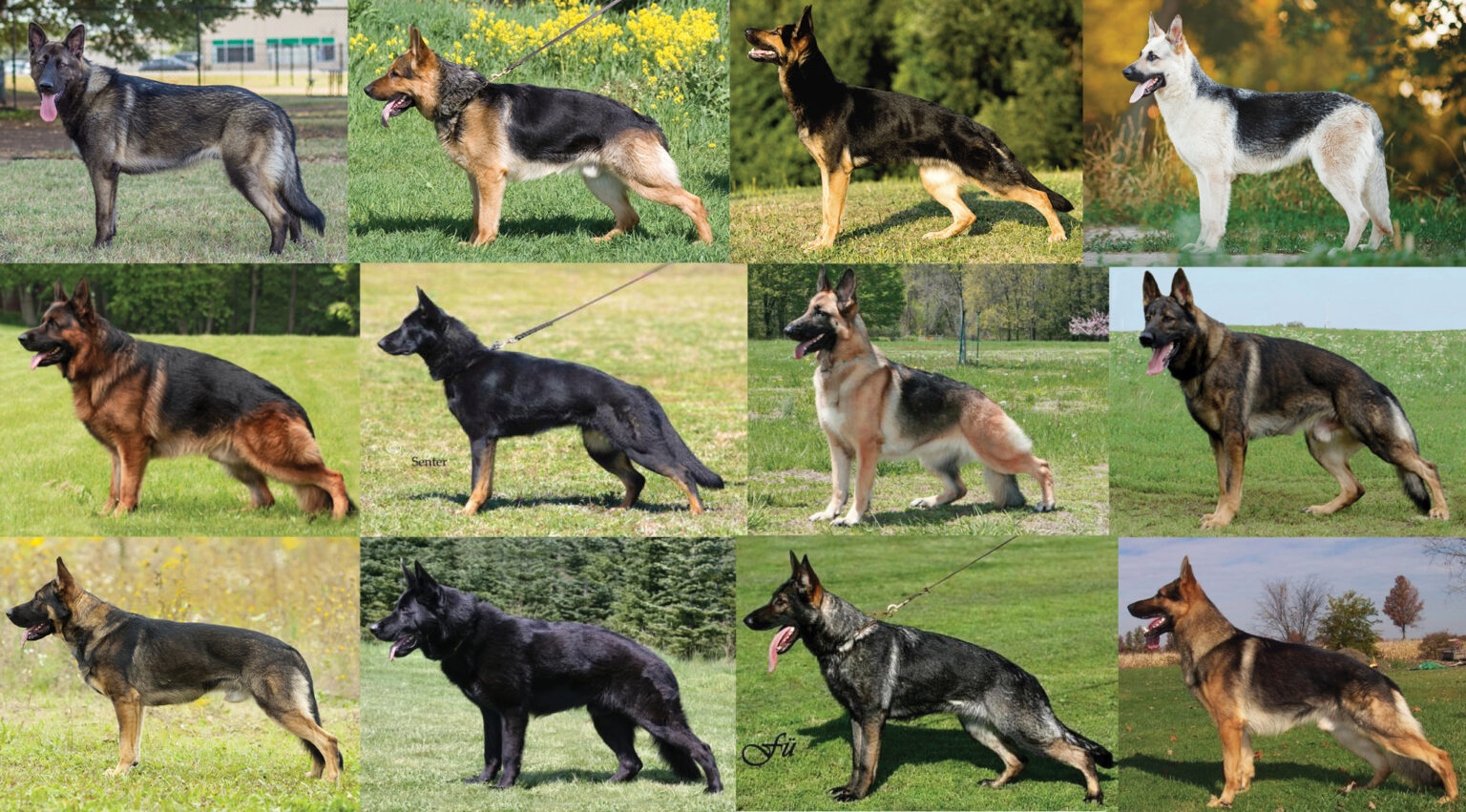
The German Shepherd Dog
German Shepherds are large, powerful dogs possessing a unique blend of intelligence, beauty and agility. They are easily trained and are known for their effortless gait and powerful transmission. Whether at work, at home, or in the show ring—few breeds possess the versatility and charm of a well-bred German Shepherd.
Character is one of the most endearing trademarks of German Shepherds. In terms of temperament, they can run the gamut from soft companion-type animals to hard working-trait dogs. They can be accomplished in herding, tracking, search and rescue, protection and agility—and do well with children and the elderly when properly socialized.
German Shepherds are highly intelligent, social animals that can faithfully protect our homes and families. They are expressive and alert and loyal to their owners. Most are eager to learn and enjoy outdoor activities and water sports.
German Shepherds are the epitome of beauty and grace and are remarkably agile. Even the most laid back German Shepherd can be a formidable companion and prospective buyers need to understand fully that their new puppy could top 80+ lbs. For this reason, proper socialization and basic obedience are paramount to the development of a stable, well-adjusted, adult dog. It is far easier to teach appropriate behaviors a puppy, then to attempt to retrain an older dog.
Your patience, guidance, and affection toward your German Shepherd puppy will be rewarded ten fold by more than a decade of loyalty, devotion and companionship for you and your family.
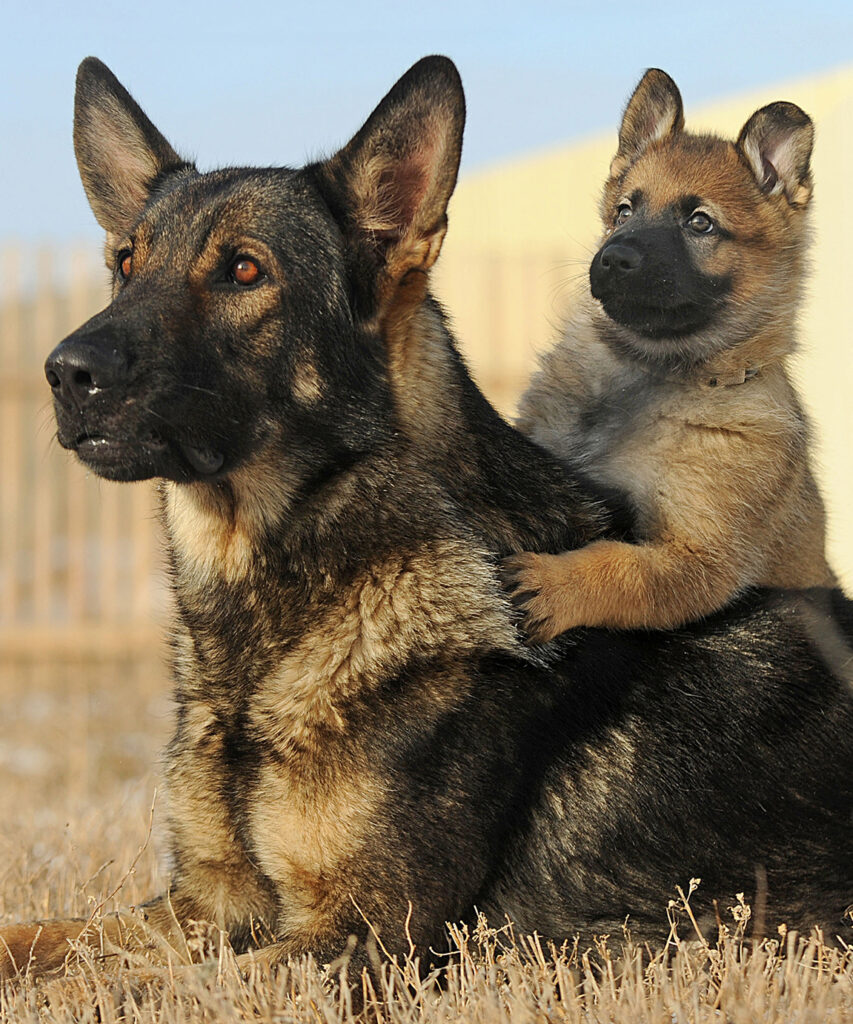
German Shepherd Types
German Shepherd Dogs are divided into two distinct categories—those bred for success in the show ring and those bred for success in the field (Schutzhund). Show lines include American, Canadian and West German dogs, while working lines include West German, East German (DDR) and Czech dogs. There is a third category of German Shepherd that includes white dogs. White shepherds do not compete in the American Kennel Club (AKC) show ring, but do compete in the Canadian Kennel Club (CKC) and other show organizations. There have also been white German Shepherds that have successfully competed on the field in agility, flyball and schutzhund.
Show-line German Shepherds vs. working-line German Shepherds
Show-line German Shepherds are bred to gait (trot) and look phenomenal doing so. No other breed of dog can out trot a well-bred show-line German Shepherd. These dogs can attain working titles—and are required to do so for German show ratings—but their primary function is to excel based on movement and appearance in the show ring—NOT on working ability in the field.
Working-line German Shepherds are bred for strength and endurance, prey drive, retrieve drive and trainability. These dogs excel in high-level Schutzhund competition which include tracking, obedience and protection. Working dogs should be clear minded with an insatiable desire to please. Temperaments range from dogs that are very hard (requiring experienced handlers) to dogs more soft and suited for companion work.
To receive a German show title and eligibility for breeding, all dogs, whether show line or working line, are required to title in the field and in the show ring. Rarely do show-line dogs excel in high-level Schutzhund competition and even the best working-line dog cannot out rank a world-class show dog in the ring. In AKC and CKC show organizations, dogs are not required to attain a working title to compete in the show ring.
Show-line German Shepherds doing what they are bred to do—gait (trot) and look darn good doing it.
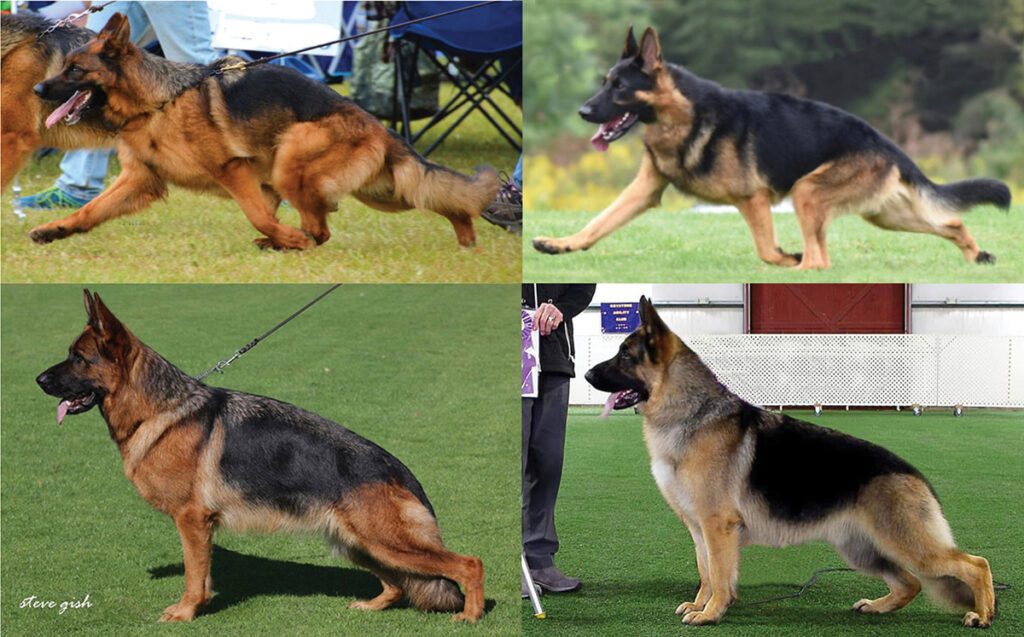
Working-line German Shepherds doing what they are bred to do—exhibit courage, obedience and an insatiable will to please.
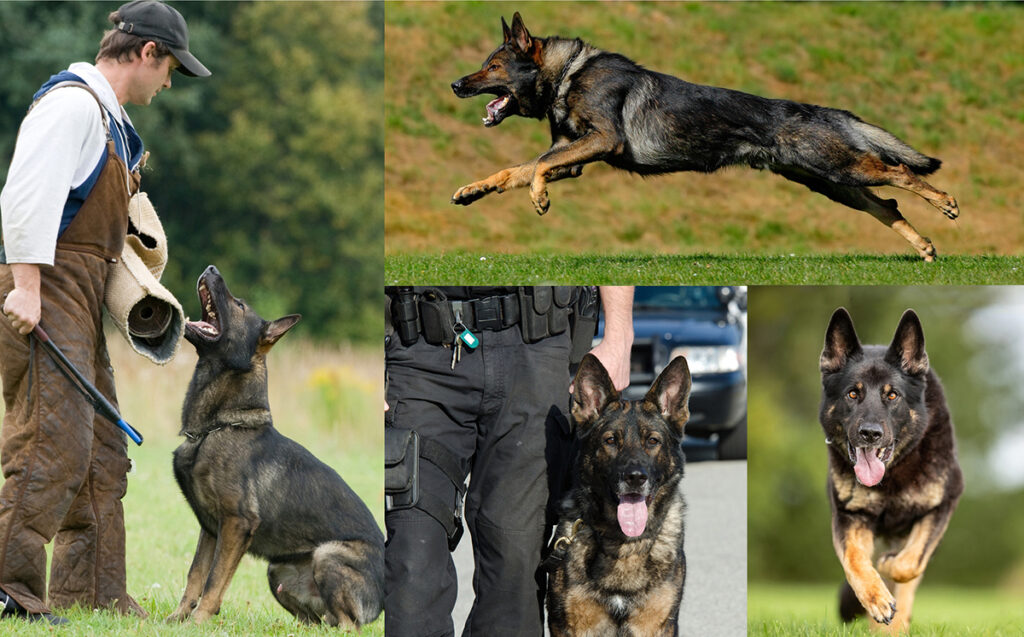
White German Shepherds doing what they are bred to do—excel in the conformation ring, in sport and in the home.
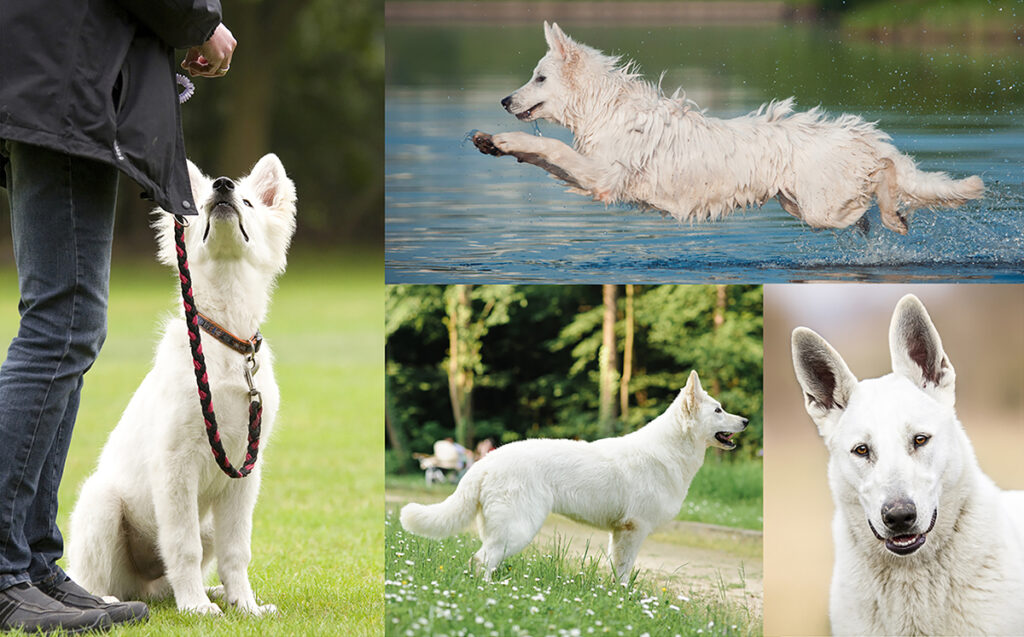
Companion German Shepherds doing what they do best—bring joy, laughter and loyalty to those who love them.
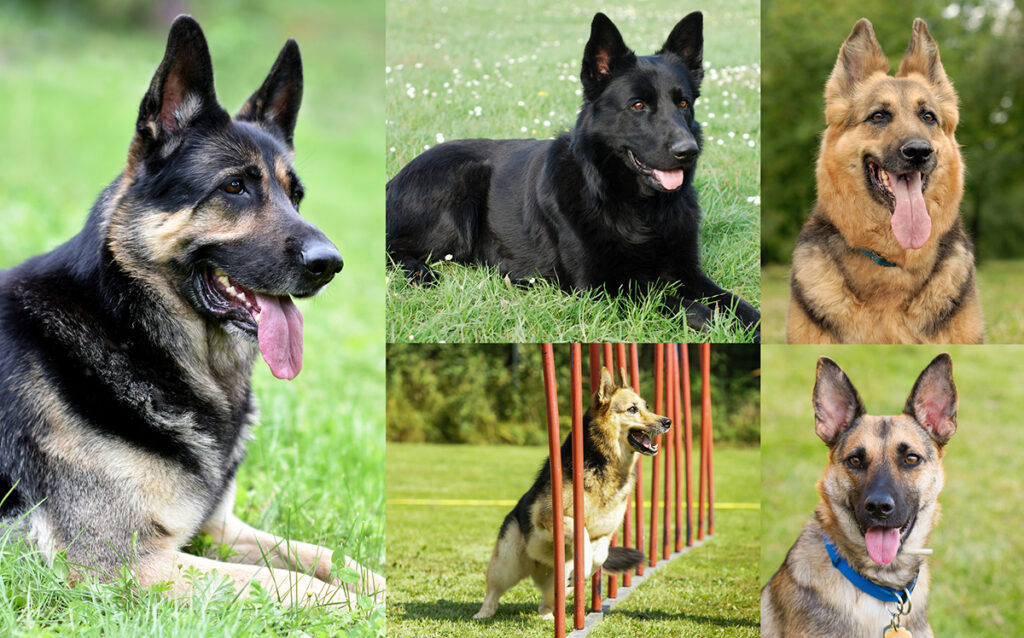
German Shepherd Body Type
Body type is used to describe the overall appearance and expression of a German Shepherd and is somewhat independent of quality. Meaning, you can have two exceptional German Shepherds with different body types. The body type of a good working dog can be different from that of a good show dog. German Shepherd breeders strive to refine their body types—leading to dogs that are consistent in appearance and expression—yet diverse enough to excel in a variety of areas. Below are examples of the various body types found in German Shepherd Dogs. Working dogs are bred for strength, stability and endurance. Show dogs are bred for powerful gaiting with a marked increase in rear angulation (slope) required for extreme transmission of energy from the rear. Some lines of working- and show-line German Shepherds still maintain the original body type as outlined in the breed standard. These dogs tend to be more moderate in height and weight and are less angulated or sloped in the body. And lastly, there are lines bred for increased size and weight making them not as proficient at protection work or other physically demanding activities, but these dogs can excel as companion animals and therapy dogs.
Different body types are just one aspect of the German Shepherd Dog that make them such great working animals and companions. Whether you are looking for a show dog, a working dog or a life-long friend—with careful consideration and a little research—you can find a dog well suited to you and your lifestyle. Below are examples of body types seen in German Shepherd Dogs.
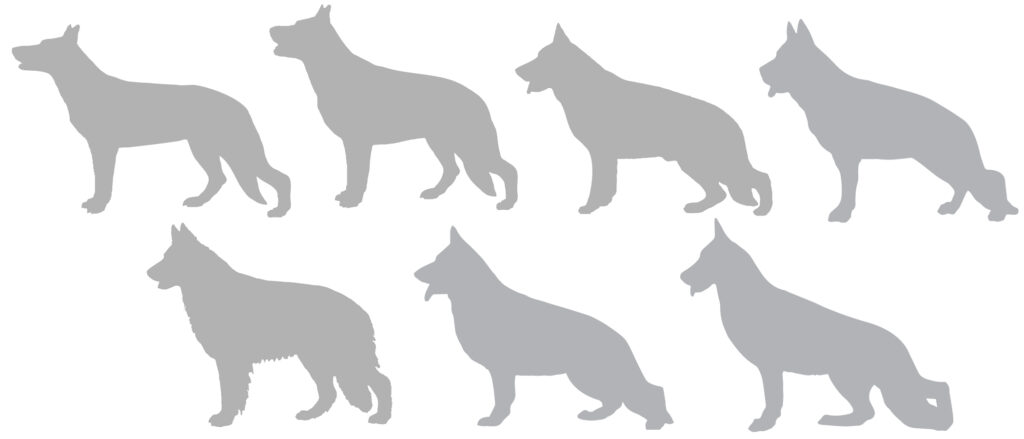
Six components are used to define body type: outline, proportion, size/strength, head/expression, condition, and coat/color.
Outline. The outline of a German Shepherd is the overall picture the dog portrays when viewed in profile. Even in silhouette, the outline of a quality German Shepherd should appear distinctive and well built. Strength and nobility are evident even when its physical details are omitted.
Proportion. Evaluating proportion is simple. Your German Shepherd must be slightly longer than it is tall. Any deviations can impact it’s functionality.
Size/Strength. Minimum and mazimum size requirements for German Shepherds are outlined in the standard. Variances above and below these standards do occur. Increased size inevitably results in decreased agility and endurance. A German Shepherd’s strength is defined by its degree of muscularity and it’s bone mass/density.
Head/Expression. Aside from outline and size/strength, the head is the most prominent feature of a German Shepherd. It is here that expression and sex are apparent. You should be able to sex a German Shepherd by looking at its head. Males with weak, bitchy heads—or bitches with overly masculine heads—are penalized. The head should convey strength of character, intelligence, nobility and exquisite health.
Condition. Condition refers to overall firmness of a dog’s skin, muscles and ligaments. A well-conditioned German Shepherd should be solid throughout. No components of the body should bounce or sag, or appear loose. Condition is greatly influenced by a dog’s muscle mass, ligamentation, and its physical conditioning.
Coat/Color. German Shepherds have close-fitting, double coats of medium coarse guard hairs and a soft undercoat. Coats that are excessively long, too short, curly or wavy are penalized. Dogs with good color are those that have muzzles, noses, eye rims and lips that are black. The nails should also be dark and a rich coat pigment should be present regardless of color. Coat lengths can vary from the traditional stock coat to various long-coat varieties.
German Shepherd Body Types
